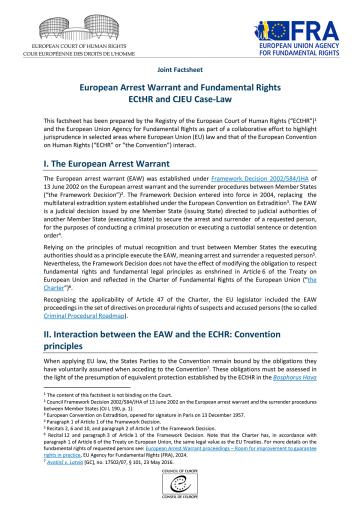The European arrest warrant (EAW) was established under Framework Decision 2002/584/JHA of 13 June 2002 on the European arrest warrant and the surrender procedures between Member States (“the Framework Decision”) . The Framework Decision entered into force in 2004, replacing the multilateral extradition system established under the European Convention on Extradition . The EAW is a judicial decision issued by one Member State (issuing State) directed to judicial authorities of another Member State (executing State) to secure the arrest and surrender of a requested person, for the purposes of conducting a criminal prosecution or executing a custodial sentence or detention order.
Relying on the principles of mutual recognition and trust between Member States the executing authorities should as a principle execute the EAW, meaning arrest and surrender a requested person . Nevertheless, the Framework Decision does not have the effect of modifying the obligation to respect fundamental rights and fundamental legal principles as enshrined in Article 6 of the Treaty on European Union and reflected in the Charter of Fundamental Rights of the European Union (“the Charter”).
Recognizing the applicability of Article 47 of the Charter, the EU legislator included the EAW proceedings in the set of directives on procedural rights of suspects and accused persons (the so called Criminal Procedural Roadmap).



